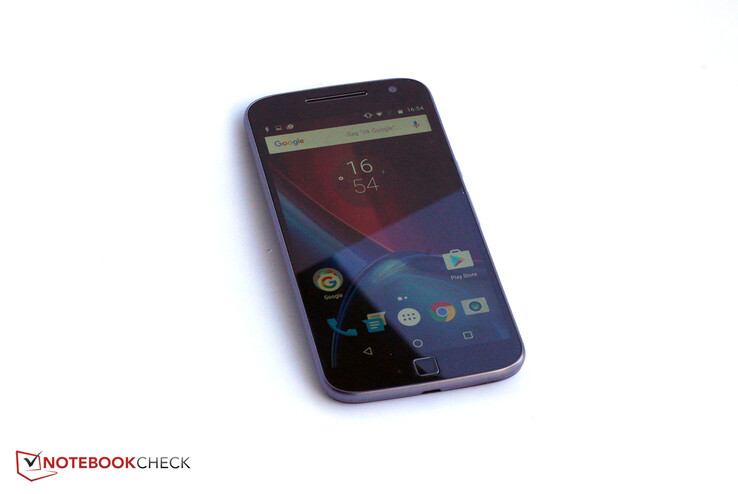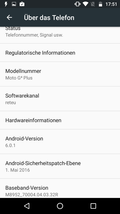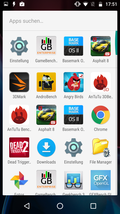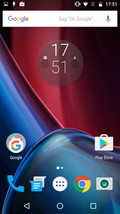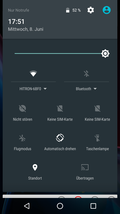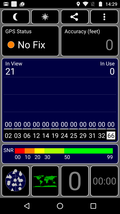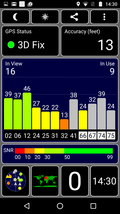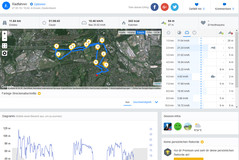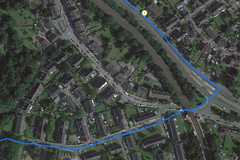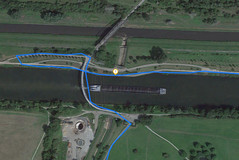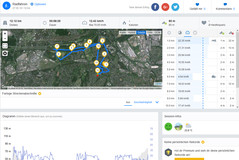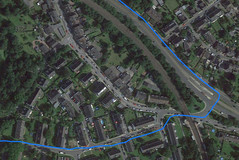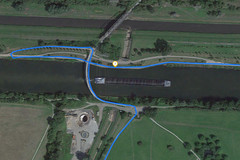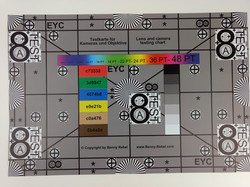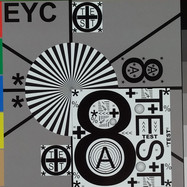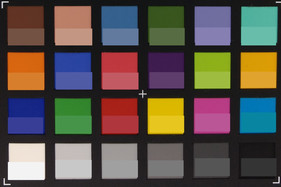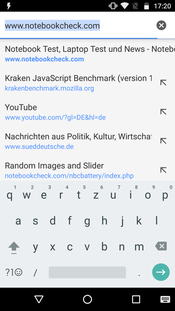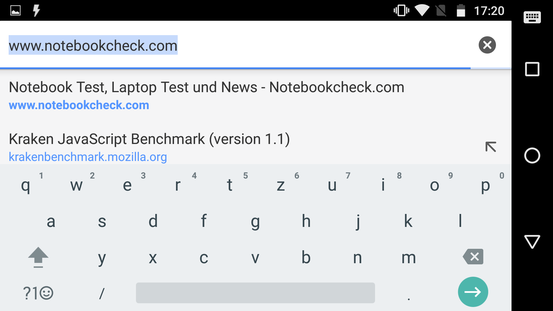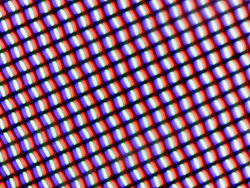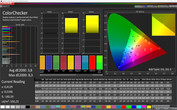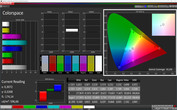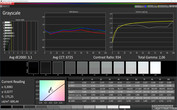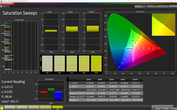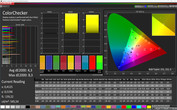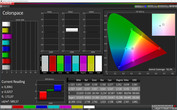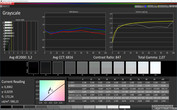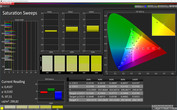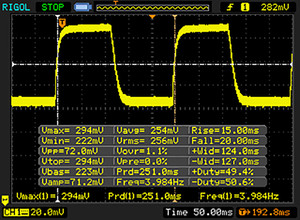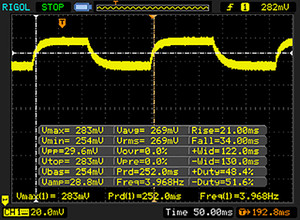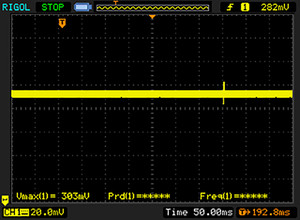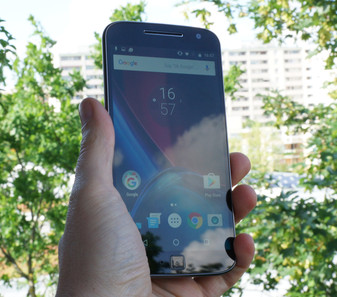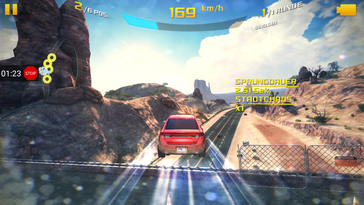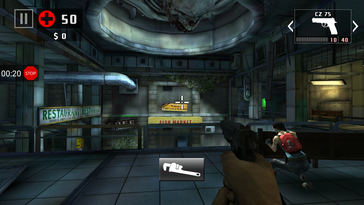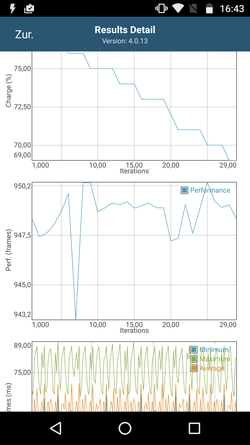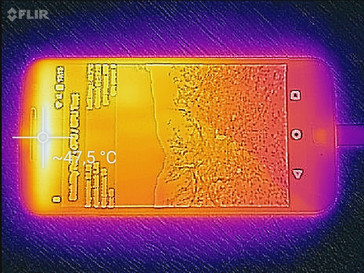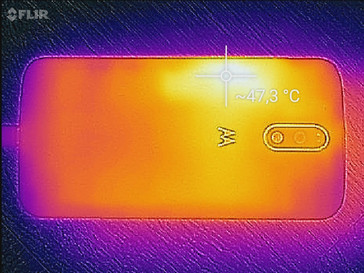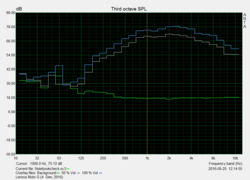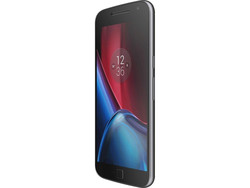Lenovo Moto G4 Plus Smartphone Review
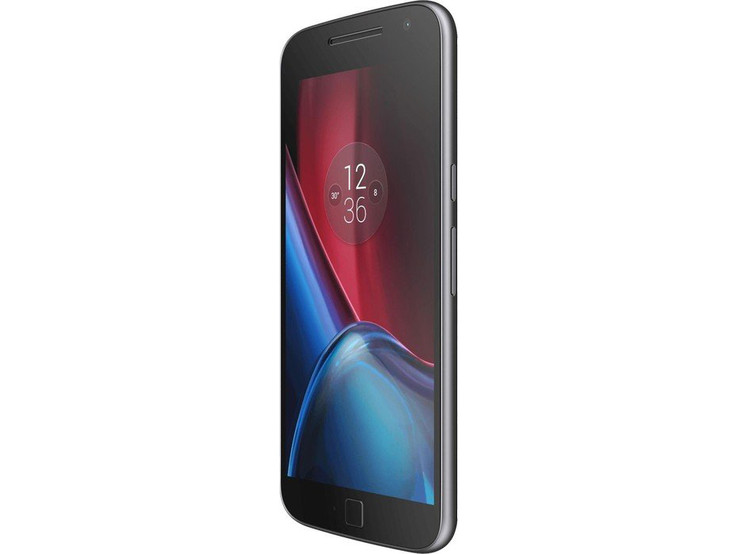
For the original German review, see here.
The first trend was towards "Compact" models, now it is the other way around: Apple started it, and now we get "Plus" models from pretty much every manufacturer; Huawei P9 Plus, Honor 6 Plus and the Moto G4 Plus from Lenovo or Motorola, respectively. Those "Plus" models are usually bigger and faster, similar to the iPhone 6s. Lenovo, however, follows a different approach: The normal Moto G4 (review will follow soon) is not equipped with a fingerprint scanner, does not support quick-charge and has a 13 MP camera. The Moto G4 Plus comes with all these features and even a better 16 MP camera with laser autofocus and dual-flash. The size and the SoC are identical.
After the acquisition by Lenovo, Motorola is in a transition. The devices are officially manufactured by Lenovo and are only called Lenovo Moto. This is also the case for the fourth generation of the Moto G. There is no shortage of comparison devices: Mainstream smartphones with 5.5 inches are pretty popular right now. We use the OnePlus 2, Honor 5X, Huawei P9 Lite and Motorola's own Moto X Play for the comparison.
Case
The design philosophy of the Lenovo Moto G4 is similar to its predecessor, but there are obviously some smaller updates. The G4 Plus is equipped with a fingerprint scanner, which replaces the lower speaker, and the camera module at the back is more subtle. We still get the round shape without real corners, so the device still feels good in the hands. The case is once again completely made of plastic, but it is not waterproof like the old one anymore, only spill-water resistant. Lenovo did surveys and found out that the waterproofness is just not an important feature.
The device is a bit thinner in return and the maximum height is 9.8 millimeters (~0.4 in). This is okay compared to other devices, but the Huawei P9 Lite is even considerably thinner. A weight of 155 grams (~5.5 oz) is comparatively low if you look at the other competitors.
You can remove the back panel, which will give you access to both SIM slots and the MicroSD-slot, which are conveniently separated. Unfortunately, you can not remove the battery, but it is at least properly indicated this time.
One interesting topic is the customizability: Retail stores will only sell the rather boring black and white versions, but there is the MotoMaker on Motorola's website, where you can customize your device. You can decide between a white or black front, and there are eight different colors for the back, including red, black, white, green, pink and several shades of blue. You can also add golden, gray, silver, blue, or pink accents, around the camera lens, for example. Finally, you can add an individual engraving and a personal welcome message.
Connectivity
Our review model of the Moto G4 Plus has 16 GB internal memory, and this model currently retails for 270-300 Euros (~$305-$338). More storage is only available in the Moto Maker on Motorola's website: 32 GB storage are available for 300 Euros and 344 Euros (~$338 and $388) are charged for 64 GB in combination with 4 GB RAM. The normal models of the Moto G4 Plus are equipped with 2 GB RAM.
MicroSD-cards with a capacity of up to 128 GB are supported by the smartphones, and apps can be transferred to the memory card. You can also format the MicroSD-card as internal storage in Android 6. It will then only work with this particular device, but it can be used as internal storage without limitations. The Moto G4 Plus does support this feature.
Next to this slot at the back, you will find two Micro-SIM slots, conveniently equipped with adapters for nano-SIMs. The Moto G4 Plus therefore supports dual-SIM cards, so you can use it for private and business calls, for example.
USB on-the-go, which describes the capability to attach storage devices directly to the smartphone, is available, but the Moto G4 Plus does not offer an NFC module.
Software
Motorola is a former Google company and continues to use Vanilla Android without launcher, which results in fast updates and also more performance. The Lenovo Moto G4 Plus is already shipped with Android 6.0 Marshmallow, while many other modern devices still use the previous version.
There is obviously once again the Moto App you can use to set up some extensions. This includes, for example, gestures to activate the camera or show notifications when the display is turned off. Some old features of Motorola's old apps are implemented into Android by now (like the data migration from other smartphones or the setup of rules based on location and time), so these features were waived. Except for the Moto App, there are no further additional apps.
Communication & GPS
The Lenovo Moto G4 Plus supports four GSM, four UMTS and nine LTE bands (maximum downstream/upstream: 150/50 Mbps). This should cover some places across the world, but there will probably be some blank spaces for frequent travelers. The LTE signal was good in the well-developed metropolitan Vodafone network and we usually still had 3 to 4 bars inside the building.
Included WLAN standards are 802.11 a/b/g/n, so the smartphone also supports the 5 GHz band and fast wireless networks with up to 300 Mbps. The signal quality is good: With a distance of ten meters (~33 ft) to the router (FritzBox 6490) and with three walls in between, only 2 out of 4 bars were indicated, but websites were opened just as quickly as directly next to the router. Another three meters (~10 ft) and another wall dropped the indicator to 1 bar; websites still opened quickly, but a bit slower.
The GPS module can find some satellites indoors, but the signal is too weak for a location. The smartphone will quickly find a sufficient number of satellites outdoors, and the location is accurate down to four meters (~13 ft).
We use a bicycle tour for detailed results and compare the performance of the Lenovo Moto G4 Plus with the professional navigation device Garmin Edge 500. The measured track length differs by 500 meters (~0.3 miles), which is a significant deviation. We can see that the Moto G4 Plus takes "shortcuts" quite often when it does not recognize sufficient waypoints and then just draws a straight line. It looks like we hover across the river or through a front yard. The professional navigation device had more waypoints, but is not always 100% accurate, either.
The Moto G4 Plus should be sufficient for some hobby navigation purposes, but you will have to get a more expensive smartphone if you need more accurate results.
Telephone Functions & Voice Quality
The phone app was not changed by Lenovo/Motorola, either, and corresponds with the stock Android app. You can search for contacts via keyboard or voice directly on the first page, call favorites or use the number pad. There are also tabs for the call history and contacts. The handling should not be a problem for beginners – and you will know the app anyway if you have ever used Android before.
The voice quality is decent, but not overwhelming. The recipient understands us pretty well as long as we do not speak too quietly, but there is a slight noise most of the time. The ear piece is also decent, but the voice of the other person sounds a bit muffled. At least it is pretty loud if necessary. The hands-free function works better; both the speaker and microphone quality are good.
Cameras
We already mentioned that the camera of our review unit is upgraded compared to the regular Moto G4: The resolution got a bump to 16 MP, it is equipped with a dual-flash for outdoors and artificial light, and a laser autofocus, which works up to a distance of around 1.5 meters (~5 ft) to the object. The aperture is f/2.0, so it is pretty wide open – which improves low-light pictures, but you might be able to see some bloom in brighter environments.
Our first impression of the camera pictures was good. You can still see details in dark areas, and the sharpness is pretty decent even when you zoom in. Blurry peripheral areas, which can often be noticed with less expensive modules, are no general problem for the Moto G4 Plus.
The color reproduction on the other hand is a bit cool with a slight blue cast. You can quickly see blooming effects on bright surfaces. The smartphone also produces good results in low-light situations, but the camera of the Huawei P9 manages even sharper images in this case. All in all, we are pleased with the main camera of the Moto G4 Plus, and it can actually compete with the pictures from the iPhone 6s Plus.
The front camera uses a 5 MP sensor. This is sufficient for selfies and the picture quality is also decent. The trick is the wide-angle lens, which can capture a lot of information and hardly distorts at the same time.
Videos with the main camera are limited to the 1080p resolution at 30 frames per second. It is unfortunate that we do not get 4K recordings similar to the OnePlus 2, but the latter is pretty much the only device with 4K in this price range. The video quality is okay and the sensor once again leaves a good impression. Videos are not that smooth because of the 30 fps, which is particularly noticeable when you move the camera, but the sharpness is good in return. The colors once again have a blueish cast.
We take pictures of two reference charts to evaluate the sharpness and the color reproduction of the main camera even further. The camera of the Moto G4 Plus turns out to be very sharp, and we can only notice small artifacts at the edges in the enlarged picture, but all the details are still clearly visible. Colors are way too dark, and white has a brownish cast, but the colors look pretty rich in general.
Accessories & Warranty
Lenovo or Motorola, respectively, only grants a 12-month warranty for their smartphones.
Included accessories for the Moto G4 Plus are a charging cable and a Turbo Charger. Lenovo currently does not offer dedicated accessories for the device on Motorola's website, but you can purchase an additional Turbo Charger online for around 30 Euros (~$34).
Input Devices & Handling
The virtual keyboard is also the standard Android model, which has a clear layout, is simple to use and offers many settings. If you prefer another keyboard layout, you can obviously install another model from the Play Store. You should, however, look for a trustworthy provider, since the keyboard app could transmit keyboard inputs to the app provider.
The touchscreen is responsive up into the peripheral areas and works very well. The three control elements for "App Overview", "Home", and "Back" are implemented as software buttons at the lower part of the display. The fingerprint scanner cannot be used as the home button, only to unlock the device. A somewhat strange decision, but Lenovo argues it wanted pure Android without hardware buttons.
You can easily find the buttons at the side and they provide a good pressure point; the standby button is ribbed and can easily be distinguished from the volume rocker.
Display
5.5 inches, 1920x1080 pixels, IPS technology – these are the specs for the display of the Lenovo Moto G4 Plus. The picture is pretty sharp at 401 PPI, and you can hardly spot any individual pixels with the naked eye. All the other smartphones in this price range are limited to Full HD as well, whereas the predecessor had a lower resolution on a smaller screen.
The brightness results of the Moto 4G Plus are very good: 588.6 cd/m² on average are very high, but the brightness distribution of 87 percent could be a bit better. Still, only the trained eye will notice color differences on large colored surfaces. The Moto X Play even manages a higher average luminance with better brightness distribution.
The maximum luminance is a bit lower with the activated brightness sensor, but 597 cd/m² are still quite a lot. The more practical APL50 test still determines a very good 579 cd/m².
| |||||||||||||||||||||||||
Brightness Distribution: 87 %
Center on Battery: 609 cd/m²
Contrast: 967:1 (Black: 0.63 cd/m²)
ΔE ColorChecker Calman: 3.8 | ∀{0.5-29.43 Ø4.78}
ΔE Greyscale Calman: 3.1 | ∀{0.09-98 Ø5}
Gamma: 2.06
CCT: 6725 K
| Lenovo Moto G4 Plus IPS, 1920x1080, 5.5" | OnePlus 2 IPS, 1920x1080, 5.5" | Honor 5X IPS, 1920x1080, 5.5" | Huawei P9 Lite IPS, 1920x1080, 5.2" | Motorola Moto X Play IPS, 1920x1080, 5.5" | Motorola Moto G 3. Gen 2015 XT1541 IPS, 1280x720, 5" | |
|---|---|---|---|---|---|---|
| Screen | 4% | -8% | -15% | -2% | -10% | |
| Brightness middle (cd/m²) | 609 | 451 -26% | 535 -12% | 505 -17% | 641 5% | 418 -31% |
| Brightness (cd/m²) | 589 | 446 -24% | 521 -12% | 468 -21% | 620 5% | 407 -31% |
| Brightness Distribution (%) | 87 | 90 3% | 85 -2% | 88 1% | 93 7% | 95 9% |
| Black Level * (cd/m²) | 0.63 | 0.3 52% | 0.43 32% | 0.74 -17% | 0.4 37% | 0.49 22% |
| Contrast (:1) | 967 | 1503 55% | 1244 29% | 682 -29% | 1603 66% | 853 -12% |
| Colorchecker dE 2000 * | 3.8 | 3.84 -1% | 4.88 -28% | 4.1 -8% | 5.37 -41% | 3.92 -3% |
| Colorchecker dE 2000 max. * | 8.3 | 8.66 -4% | 5.8 30% | |||
| Greyscale dE 2000 * | 3.1 | 3.97 -28% | 5.2 -68% | 4.9 -58% | 6.01 -94% | 3.81 -23% |
| Gamma | 2.06 107% | 2.46 89% | 2.26 97% | 2.5 88% | 2.44 90% | 2.27 97% |
| CCT | 6725 97% | 7283 89% | 7766 84% | 7116 91% | 7806 83% | 7361 88% |
| Color Space (Percent of AdobeRGB 1998) (%) | 58.07 | |||||
| Color Space (Percent of sRGB) (%) | 90.14 |
* ... smaller is better
The contrast ratio of 967:1 is good, even this is not really a result of the black value, which is comparatively high at 0.63 cd/m², but mainly the high display luminance. The black value is even slightly higher at 0.65 cd/m² in the more realistic APL50 test. Other devices like the OnePlus 2, Honor 5X or Moto X Play manage much higher contrasts. Subjectively, black surfaces appear pretty dark and rich at medium brightness settings, and colors are quite clear.
We use the software CalMAN and a spectrophotometer for a further analysis of the colors. We can fortunately see small deviations compared to the reference color space. The grayscale only shows a slight blue cast, but it is hardly visible with the naked eye.
The smartphone offers an "Intense" setting for the colors. It will slightly affect the color accuracy, but the colors are supposed to be richer in return. Subjectively, you can hardly see a difference, and the measurements do not show a big difference, either.
The response times of the display are comparatively slow compared to other devices. This is annoying for passionate gamers. We could not detect flickering caused by pulse-width modulation (the extremely short deactivation of the screen to reduce the brightness).
Display Response Times
| ↔ Response Time Black to White | ||
|---|---|---|
| 35 ms ... rise ↗ and fall ↘ combined | ↗ ms rise | |
| ↘ ms fall | ||
| The screen shows slow response rates in our tests and will be unsatisfactory for gamers. In comparison, all tested devices range from 0.1 (minimum) to 240 (maximum) ms. » 92 % of all devices are better. This means that the measured response time is worse than the average of all tested devices (20.2 ms). | ||
| ↔ Response Time 50% Grey to 80% Grey | ||
| 55 ms ... rise ↗ and fall ↘ combined | ↗ ms rise | |
| ↘ ms fall | ||
| The screen shows slow response rates in our tests and will be unsatisfactory for gamers. In comparison, all tested devices range from 0.165 (minimum) to 636 (maximum) ms. » 91 % of all devices are better. This means that the measured response time is worse than the average of all tested devices (31.6 ms). | ||
Screen Flickering / PWM (Pulse-Width Modulation)
| Screen flickering / PWM not detected | |||
In comparison: 53 % of all tested devices do not use PWM to dim the display. If PWM was detected, an average of 8111 (minimum: 5 - maximum: 343500) Hz was measured. | |||
Thanks to the very bright display, you can also see the display content outdoors on very bright days. Sure, direct sunlight will cause annoying reflections, but you can recognize the content very well when you slightly turn the device. The brightness sensor works pretty fast and adjusts the brightness according to the ambient lighting conditions.
The display is based on IPS technology, so there is not much to criticize in terms of viewing angles. The glossy screen can affect the visibility from very flat angles due to reflections in brighter environments, but this is the case for pretty much any smartphone. Otherwise, colors are stable for a long time and the contrast stays high.
Performance
The Qualcomm Snapdragon 617 MSM8952 is a pretty new SoC, which was released last September. The 64-bit mainstream processor consists of eight cores divided into two clusters, which run with 1.5 GHz and 1.2 GHz, respectively. The advantage is the weaker cluster can handle simple tasks and save power. If you need more performance, the faster cluster will be activated.
The Moto G4 Plus is actually a bit faster than the Moto X Play with the Snapdragon 615, but you will probably not notice the differences in practice. Compared to the predecessor, the Moto G (3rd generation), the gap is bigger. The navigation through the menus is very smooth on the Moto G4 Plus, and apps are quickly launched as well.
Graphics calculations are handled by the Adreno 405, which also supports DirectX 11.2. It is also used for the Snapdragon 615, but we can see much higher scores compared to the Moto X Play. The advantage in respect of GPU performance is almost a quantum leap over the Moto G (3rd generation).
| AnTuTu v6 - Total Score (sort by value) | |
| Lenovo Moto G4 Plus | |
| OnePlus 2 | |
| Honor 5X | |
| Huawei P9 Lite | |
| Motorola Moto X Play | |
| Geekbench 3 | |
| 64 Bit Single-Core Score (sort by value) | |
| Lenovo Moto G4 Plus | |
| OnePlus 2 | |
| Honor 5X | |
| Huawei P9 Lite | |
| Motorola Moto X Play | |
| Motorola Moto G 3. Gen 2015 XT1541 | |
| 64 Bit Multi-Core Score (sort by value) | |
| Lenovo Moto G4 Plus | |
| OnePlus 2 | |
| Honor 5X | |
| Huawei P9 Lite | |
| Motorola Moto X Play | |
| Motorola Moto G 3. Gen 2015 XT1541 | |
| 3DMark | |
| 1280x720 offscreen Ice Storm Unlimited Score (sort by value) | |
| Lenovo Moto G4 Plus | |
| OnePlus 2 | |
| Honor 5X | |
| Huawei P9 Lite | |
| Motorola Moto X Play | |
| Motorola Moto G 3. Gen 2015 XT1541 | |
| 1280x720 offscreen Ice Storm Unlimited Graphics Score (sort by value) | |
| Lenovo Moto G4 Plus | |
| OnePlus 2 | |
| Honor 5X | |
| Huawei P9 Lite | |
| Motorola Moto X Play | |
| Motorola Moto G 3. Gen 2015 XT1541 | |
| 1280x720 offscreen Ice Storm Unlimited Physics (sort by value) | |
| Lenovo Moto G4 Plus | |
| OnePlus 2 | |
| Honor 5X | |
| Huawei P9 Lite | |
| Motorola Moto X Play | |
| Motorola Moto G 3. Gen 2015 XT1541 | |
| 2560x1440 Sling Shot OpenGL ES 3.0 (sort by value) | |
| Lenovo Moto G4 Plus | |
| OnePlus 2 | |
| Honor 5X | |
| Huawei P9 Lite | |
| Motorola Moto X Play | |
| Motorola Moto G 3. Gen 2015 XT1541 | |
| 2560x1440 Sling Shot OpenGL ES 3.0 Graphics (sort by value) | |
| Lenovo Moto G4 Plus | |
| OnePlus 2 | |
| Honor 5X | |
| Huawei P9 Lite | |
| Motorola Moto X Play | |
| Motorola Moto G 3. Gen 2015 XT1541 | |
| 2560x1440 Sling Shot OpenGL ES 3.0 Physics (sort by value) | |
| Lenovo Moto G4 Plus | |
| OnePlus 2 | |
| Honor 5X | |
| Huawei P9 Lite | |
| Motorola Moto X Play | |
| Motorola Moto G 3. Gen 2015 XT1541 | |
| GFXBench (DX / GLBenchmark) 2.7 | |
| T-Rex Onscreen (sort by value) | |
| Lenovo Moto G4 Plus | |
| OnePlus 2 | |
| Honor 5X | |
| Huawei P9 Lite | |
| Motorola Moto X Play | |
| Motorola Moto G 3. Gen 2015 XT1541 | |
| 1920x1080 T-Rex Offscreen (sort by value) | |
| Lenovo Moto G4 Plus | |
| OnePlus 2 | |
| Honor 5X | |
| Huawei P9 Lite | |
| Motorola Moto X Play | |
| Motorola Moto G 3. Gen 2015 XT1541 | |
| GFXBench 3.0 | |
| on screen Manhattan Onscreen OGL (sort by value) | |
| Lenovo Moto G4 Plus | |
| OnePlus 2 | |
| Honor 5X | |
| Huawei P9 Lite | |
| Motorola Moto X Play | |
| Motorola Moto G 3. Gen 2015 XT1541 | |
| 1920x1080 1080p Manhattan Offscreen (sort by value) | |
| Lenovo Moto G4 Plus | |
| OnePlus 2 | |
| Honor 5X | |
| Huawei P9 Lite | |
| Motorola Moto X Play | |
| Motorola Moto G 3. Gen 2015 XT1541 | |
| GFXBench 3.1 | |
| on screen Manhattan ES 3.1 Onscreen (sort by value) | |
| Lenovo Moto G4 Plus | |
| OnePlus 2 | |
| Huawei P9 Lite | |
| Motorola Moto X Play | |
| 1920x1080 Manhattan ES 3.1 Offscreen (sort by value) | |
| Lenovo Moto G4 Plus | |
| OnePlus 2 | |
| Huawei P9 Lite | |
| Motorola Moto X Play | |
Web browsing is enjoyable on the Moto G4 Plus, but there are also much faster devices within the comparison group. The OnePlus 2, for example, is superior, but the predecessor is usually beaten. Subjectively, web sites open with a slight delay, but the overall performance is still satisfactory.
| Octane V2 - Total Score (sort by value) | |
| Lenovo Moto G4 Plus | |
| OnePlus 2 | |
| Honor 5X | |
| Huawei P9 Lite | |
| Motorola Moto X Play | |
| Motorola Moto G 3. Gen 2015 XT1541 | |
| Mozilla Kraken 1.1 - Total (sort by value) | |
| Lenovo Moto G4 Plus | |
| OnePlus 2 | |
| Honor 5X | |
| Huawei P9 Lite | |
| Motorola Moto X Play | |
| Motorola Moto G 3. Gen 2015 XT1541 | |
| WebXPRT 2015 - Overall (sort by value) | |
| Lenovo Moto G4 Plus | |
| OnePlus 2 | |
| Honor 5X | |
| Huawei P9 Lite | |
| Motorola Moto X Play | |
| Motorola Moto G 3. Gen 2015 XT1541 | |
| JetStream 1.1 - Total Score (sort by value) | |
| Lenovo Moto G4 Plus | |
| OnePlus 2 | |
| Honor 5X | |
| Huawei P9 Lite | |
| Motorola Moto X Play | |
| Motorola Moto G 3. Gen 2015 XT1541 | |
* ... smaller is better
The storage of our review unit is fast: The transfer rates for read operations and random write operations are high on the Moto G4 Plus. Only the Huawei P9 Lite and the OnePlus 2 can keep up with these results. The predecessor Moto G (3rd generation) is easily beaten.
We check the performance of read and write transfers to or from SD-cards, respectively, with our reference card from Toshiba Exceria Pro M401 (up to 95 MB/s read, 80 MB/s write). We measured 74.4 MB/s read and 46.92 MB/s write in combination with the Moto G4 Plus. Those are very decent results, and we like the read performance in particular.
| AndroBench 3-5 | |
| Sequential Read 256KB (sort by value) | |
| Lenovo Moto G4 Plus | |
| OnePlus 2 | |
| Honor 5X | |
| Huawei P9 Lite | |
| Motorola Moto X Play | |
| Motorola Moto G 3. Gen 2015 XT1541 | |
| Sequential Write 256KB (sort by value) | |
| Lenovo Moto G4 Plus | |
| OnePlus 2 | |
| Honor 5X | |
| Huawei P9 Lite | |
| Motorola Moto X Play | |
| Motorola Moto G 3. Gen 2015 XT1541 | |
| Random Read 4KB (sort by value) | |
| Lenovo Moto G4 Plus | |
| OnePlus 2 | |
| Honor 5X | |
| Huawei P9 Lite | |
| Motorola Moto X Play | |
| Motorola Moto G 3. Gen 2015 XT1541 | |
| Random Write 4KB (sort by value) | |
| Lenovo Moto G4 Plus | |
| OnePlus 2 | |
| Honor 5X | |
| Huawei P9 Lite | |
| Motorola Moto X Play | |
| Motorola Moto G 3. Gen 2015 XT1541 | |
| Sequential Read 256KB SDCard (sort by value) | |
| Lenovo Moto G4 Plus | |
| Huawei P9 Lite | |
| Sequential Write 256KB SDCard (sort by value) | |
| Lenovo Moto G4 Plus | |
| Huawei P9 Lite | |
Games
The gaming performance is decent. 25 frames per second (on average) with high settings in the fast racing title Asphalt 8: Airborne is a good result. The loading times are a bit long, which is surprising considering the fast storage. When you play the game, however, everything is pretty smooth. The controls via touchscreen and position sensor also worked well.
| Asphalt 8: Airborne | |||
| Settings | Value | ||
| high | 25 fps | ||
| Dead Trigger 2 | |||
| Settings | Value | ||
| high | 30 fps | ||
Emissions
Temperature
The Lenovo Moto G4 Plus keeps a cool head in idle scenarios without load: Up to 34.6 °C (94.3 °F) at the front and 33.6 °C (92.5 °F) at the back is perceptible, but it is no problem. We can measure up to 43 °C (109.4 °F) under load at the back left next to the camera. The warming is concentrated at this point and the temperatures will drop when you move away from this point, which is where the biggest part of the hand holds the phone.
The Moto G4 Plus stays comparatively cool compared to other devices. The Moto X Play, for example, gets a bit warmer and especially on a bigger area, and the OnePlus 2 is much warmer under load. The predecessor Moto G on the other hand was much cooler.
We use the GFXBench Battery Test to check if the smartphone can maintain its performance under sustained load. The test repeats the same sequence 30 times in a row and logs the frame rate. There are small variations, but the fps number is roughly consistent, so we do not expect performance drops over long periods of load.
(±) The maximum temperature on the upper side is 42.7 °C / 109 F, compared to the average of 35.2 °C / 95 F, ranging from 21.9 to 247 °C for the class Smartphone.
(±) The bottom heats up to a maximum of 43 °C / 109 F, compared to the average of 34 °C / 93 F
(±) In idle usage, the average temperature for the upper side is 32.2 °C / 90 F, compared to the device average of 32.9 °C / 91 F.
Speakers
With more than 87 dB(A), the speaker of the Moto G4 Plus can be really loud. It is located at the upper front, and is therefore combined with the ear piece you use for calls. We like the sound in general; it does not put that much emphasis on the high tones as many other smartphones, and we can even notice some deep tones. The medium tones sound a bit dull. There are slight distortions at the maximum volume.
The smartphone is shipped without a headset, but both the stereo jack and Bluetooth create clear sound via headphone and speakers.
Energy Management
Power Consumption
The consumption values of the Moto G4 Plus are also higher compared to the predecessor. It now consumes much more power while idling, and we can even measure up to 8.74 watts under load. The minimum idle consumption of 0.63 watts is okay, but the predecessor was once again better at just 0.4 watts.
The consumption is reasonable when the smartphone is turned off (0.16 watts) and in standby (0.2 watts), but could be even lower, which is shown by the comparison devices. The active notification display obviously plays a role for the standby value, because it will show the time and notifications when you lift the smartphone.
The quick-charge adapter only needs about half an hour to charge the battery from empty to 40%. A complete recharge takes about 1.5 hours.
| Off / Standby | |
| Idle | |
| Load |
|
Key:
min: | |
| Lenovo Moto G4 Plus 3000 mAh | OnePlus 2 mAh | Honor 5X 3000 mAh | Huawei P9 Lite 3000 mAh | Motorola Moto X Play mAh | Motorola Moto G 3. Gen 2015 XT1541 mAh | |
|---|---|---|---|---|---|---|
| Power Consumption | 2% | -14% | 0% | -5% | 38% | |
| Idle Minimum * (Watt) | 0.63 | 0.6 5% | 0.87 -38% | 0.73 -16% | 0.9 -43% | 0.4 37% |
| Idle Average * (Watt) | 1.91 | 1.7 11% | 2.08 -9% | 2.09 -9% | 1.6 16% | 1 48% |
| Idle Maximum * (Watt) | 1.96 | 1.8 8% | 2.22 -13% | 2.11 -8% | 1.8 8% | 1.2 39% |
| Load Average * (Watt) | 3.88 | 5.7 -47% | 5.26 -36% | 4.15 -7% | 4.9 -26% | 2.9 25% |
| Load Maximum * (Watt) | 8.74 | 6 31% | 6.34 27% | 5.05 42% | 7.2 18% | 5 43% |
* ... smaller is better
Battery Runtime
The battery has a capacity of 3,000 mAh, which corresponds with about 11.4 Wh. This means you can use the smartphone for 11.4 hours when it consumes 1 watt. The WLAN test even determines 12:15 hours, a very good result. The next best comparison device is the Moto X Play with a deficit of 8 percent. You can watch movies from the internal storage for almost 13 hours. The idle and load results are not that great, but still solid.
Based on our experiences during the review, the Moto G4 Plus can last about two days, and you might be able to squeeze out three days when you use it conservatively. The stamina is not that great when you really stress the device though.
| Lenovo Moto G4 Plus 3000 mAh | Motorola Moto X Play mAh | Honor 5X 3000 mAh | Huawei P9 Lite 3000 mAh | OnePlus 2 mAh | Motorola Moto G 3. Gen 2015 XT1541 mAh | |
|---|---|---|---|---|---|---|
| Battery runtime | -9% | -20% | 1% | -13% | 0% | |
| Reader / Idle (h) | 20.4 | 19.1 -6% | 17.6 -14% | 23.4 15% | 23.2 14% | 22.7 11% |
| H.264 (h) | 12.9 | 12.4 -4% | 10 -22% | 9.5 -26% | 9.7 -25% | 11.3 -12% |
| WiFi v1.3 (h) | 12.3 | 11.2 -9% | 10.7 -13% | 10.1 -18% | 5.9 -52% | 8.8 -28% |
| Load (h) | 3.4 | 2.9 -15% | 2.4 -29% | 4.5 32% | 3.8 12% | 4.4 29% |
Pros
Cons
Verdict
The 32 GB version of the Moto G4 Plus is currently 15 Euros (~$17) more expensive than the Moto G4 in the MotoMaker. In return, you get a very good camera, a fingerprint scanner, and the quick-charge feature in particular, which is really convenient with the corresponding power adapter. It is not supposed to harm the battery, either, so we would recommend investing the additional 15 Euros.
The Moto G4 Plus is a good investment in general when you want to buy a mainstream smartphone, because we cannot find any serious issues. Sure, it is strange that you cannot use the fingerprint scanner as a Home button. There are more connectivity options by now as well, so there is still room for improvements. The GPS module is not really accurate, either, and the voice quality could also be improved.
A really good mainstream smartphone, which can definitely justify the small additional charge over the base model.
In return, you get a very bright display with good colors, a pretty fast system, modern Android version, a decent speaker, dual-SIM support, complete charge in 1.5 hours and great practical runtimes.
Overall, the Moto G4 Plus clearly deserves a purchase recommendation, especially since you can customize your smartphone with the MotoMaker.
Lenovo Moto G4 Plus
- 06/08/2016 v5.1 (old)
Florian Wimmer




